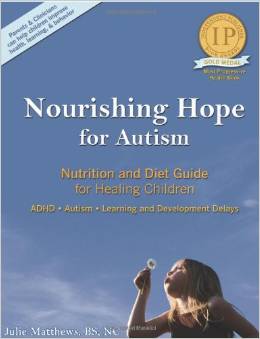We interviewed Jess Sherman, Registered Holistic Nutritionist, about three myths about healing diets and how to focus on what really matters. You can watch the replay below.
You may have heard that changing your child’s diet can help them calm down, focus, learn better, sleep better and feel better. Maybe you’ve tried gluten-free or GAPS or Paleo or other special dietary changes, or maybe you’ve been scared away from this approach or aren’t sure if it’s worth it.
In this webinar, holistic nutritionist and author Jess Sherman cleared the confusion and explained why food is such a powerful tool and how to avoid getting confused by contradictory information.
Jess explained away the three most common misconceptions that discourage families from exploring food as a tool. She also helped us understand how to leverage four nutritional concepts to help kids self-regulate better.
This webinar will be helpful to you if you are a parent or practitioner new to the idea of using food as a therapeutic tool or if you’ve been at it for a while and find yourself bogged down in details and needing some clarity. You can find Jess’s presentation about three myths about healing diets here.
Please note that you will be asked to enter your email address at the 30-minute mark to finish viewing the video.
About Jess Sherman MEd RHN
 Jess Sherman MEd RHN is the author of Raising Resilience: 36 Ways to Help Your Kids Relax, Learn and Grow. She is a Registered Holistic Nutritionist, Board Certified by the Canadian Association of Holistic Nutrition Professionals (CAHN-pro).
Jess Sherman MEd RHN is the author of Raising Resilience: 36 Ways to Help Your Kids Relax, Learn and Grow. She is a Registered Holistic Nutritionist, Board Certified by the Canadian Association of Holistic Nutrition Professionals (CAHN-pro).
She has completed extra training in herbal medicine, biomedical approaches to autism spectrum disorders, functional medicine, bioindividual nutrition. She is a certified Gut and Psychology Syndrome (GAPS) Practitioner. She is also a certified teacher with bachelor and masters degrees in Education.
Jess is a member in good standing of the Canadian Association for Nutritional Professionals and an associate member of the International Society for Nutritional Psychiatry Research.
Jess works with the team at the Ottawa Integrative Health Centre in Ottawa, Canada and has set up a virtual office and on-line course material to reach clients farther afield.
She specializes in pediatric, family and maternal nutrition with a particular emphasis on digestive issues, autism, ADHD and mental health. She wrote her book so parents could learn how food impacts their children’s mental and physical wellbeing and to give them practical strategies for feeding their kids.
You can find out more about her at www.JessSherman.com
Disclaimer
This webinar is not a substitute for medical advice, treatment, diagnosis, or consultation with a medical professional. It is intended for general informational purposes only and should not be relied on to make determinations related to treatment of a medical condition. Epidemic Answers has not verified and does not guaranty the accuracy of the information provided in this webinar.
Still Looking for Answers?
Visit the Epidemic Answers Provider Directory to find a practitioner near you.
Sources & References
Adams, J.B., et al. Comprehensive Nutritional and Dietary Intervention for Autism Spectrum Disorder-A Randomized, Controlled 12-Month Trial. Nutrients. 2018 Mar 17;10(3).
Adams, J.B., et al. Effect of a vitamin/mineral supplement on children and adults with autism. BMC Pediatr. 2011;11:111.
Adams, J.B., et al. Nutritional and metabolic status of children with autism vs. neurotypical children, and the association with autism severity. Nutr Metab (Lond). 2011 Jun 8;8(1):34.
Brown, et al. Observable essential fatty acid deficiency markers and autism spectrum disorder. Breastfeed Rev. 2014;22(2):21-6.
Cortese, S., et al. Attention-deficit/hyperactivity disorder, iron deficiency, and obesity: is there a link? Postgrad Med. 2014;126(4):155-70.
Darling, A.L., et al. Association between maternal vitamin D status in pregnancy and neurodevelopmental outcomes in childhood: results from the Avon Longitudinal Study of Parents and Children (ALSPAC). Br J Nutr. 2017 Jun;117(12):1682-1692.
El-Ansary, A., et al. Lipid mediators in plasma of autism spectrum disorders. Lipids Health Dis. 2012;11:160.
Ghanizadeh, A. Increased glutamate and homocysteine and decreased glutamine levels in autism: a review and strategies for future studies of amino acids in autism. Dis Markers. 2013;35(5):281-6.
Li, S.O., et al. Serum copper and zinc levels in individuals with autism spectrum disorders. Neuroreport. 2014;25(15):1216-20.
Mahmoud, M.M., et al. Zinc, ferritin, magnesium and copper in a group of Egyptian children with attention deficit hyperactivity disorder. Ital J Pediatr. 2011;37:60.
Millichap, J.G., et al. The diet factor in attention-deficit/hyperactivity disorder. Pediatrics. 2012 Feb;129(2):330-7.
Mossin, M.H., et al. Inverse associations between cord vitamin D and attention deficit hyperactivity disorder symptoms: A child cohort study. Aust N Z J Psychiatry. 2017 Jul;51(7):703-710.
Pastural, E., et al. Novel plasma phospholipid biomarkers of autism: mitochondrial dysfunction as a putative causative mechanism. Prostaglandins Leukot Essent Fatty Acids. 2009 Oct;81(4):253-64.
Patrick, R.P., et al. Vitamin D hormone regulates serotonin synthesis. Part 1: relevance for autism. FASEB J. 2014;28(6):2398-413.
Reynolds, A., et al. Iron status in children with autism spectrum disorder. Pediatrics. 2012;130 Suppl 2:S154-9.
Sucksdorff, M., et al. Maternal Vitamin D Levels and the Risk of Offspring Attention-Deficit/Hyperactivity Disorder. J Am Acad Child Adolesc Psychiatry. 2019 Dec 18.
Verlaet, A.A., et al. Nutrition, immunological mechanisms and dietary immunomodulation in ADHD. Eur Child Adolesc Psychiatry. 2014;23(7):519-29.
Vuillermot, S., et al. Vitamin D treatment during pregnancy prevents autism-related phenotypes in a mouse model of maternal immune activation. Mol Autism. 2017 Mar 7;8:9.
Wu, D.M., et al. Relationship Between Neonatal Vitamin D at Birth and Risk of Autism Spectrum Disorders: the NBSIB Study. J Bone Miner Res. 2018 Mar;33(3):458-466.
Resources
Matthews, Julie. Nourishing Hope for Autism: Nutrition and Diet Guide for Healing Our Children. Healthful Living Media, 2008.



